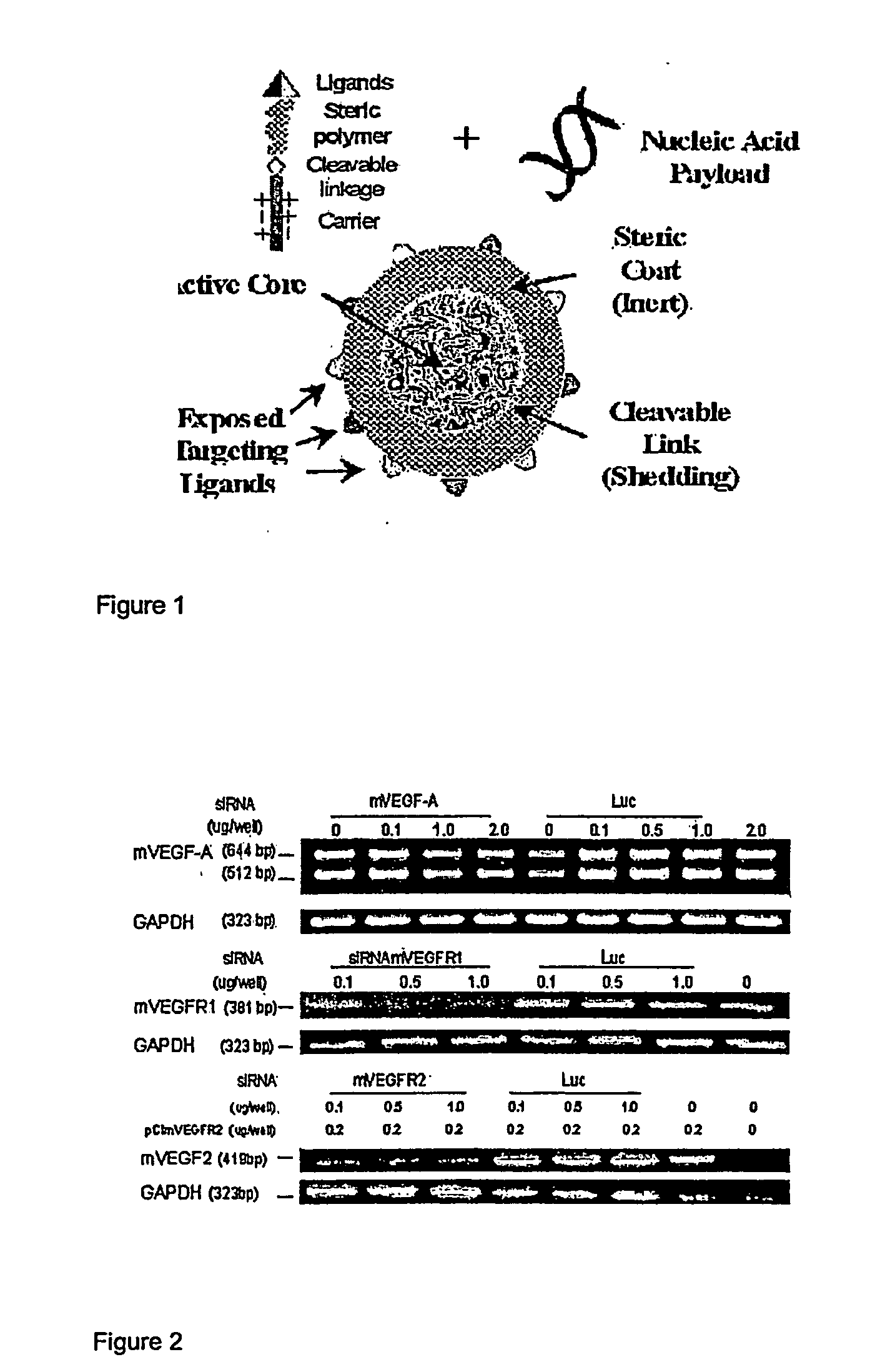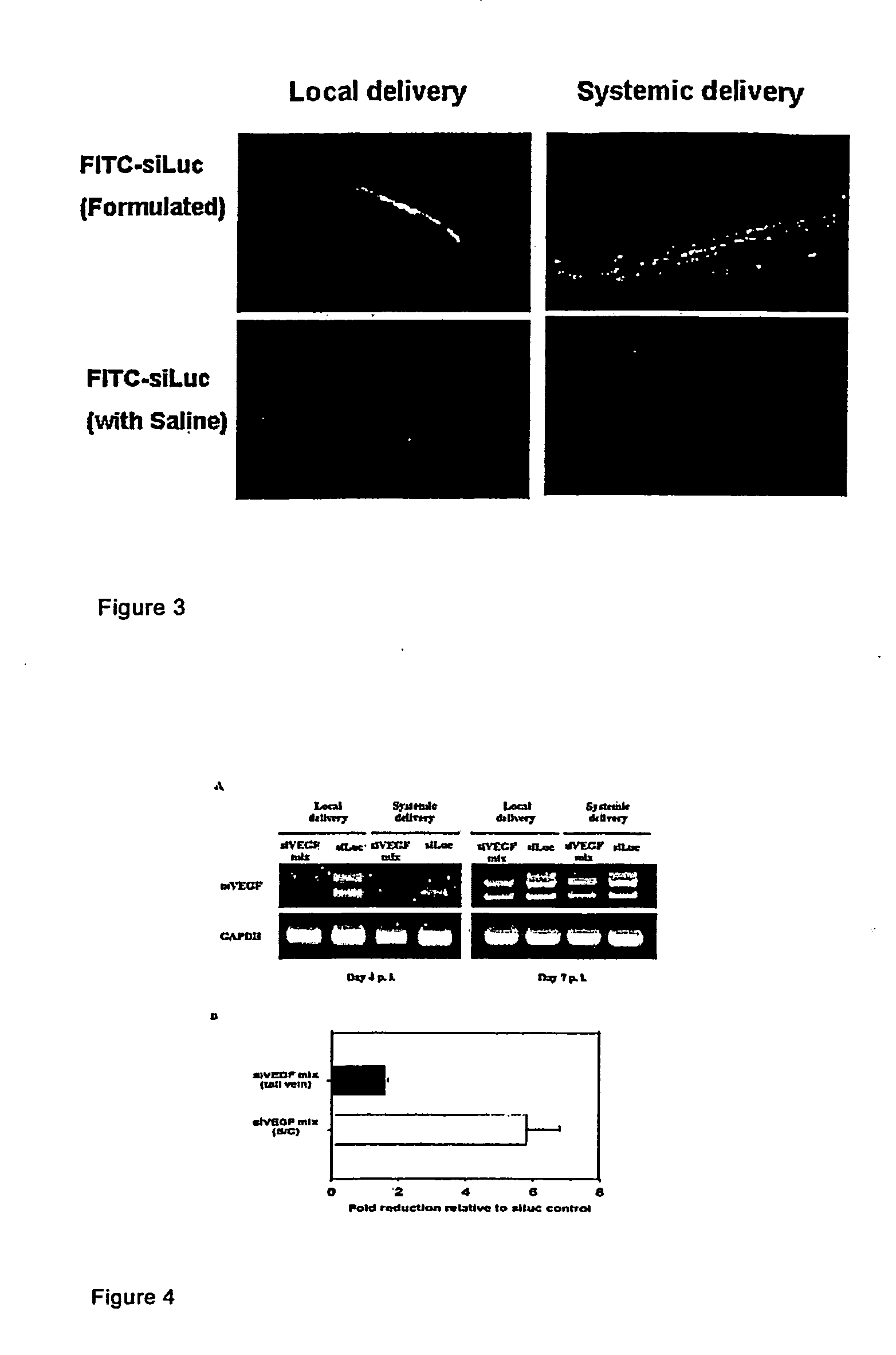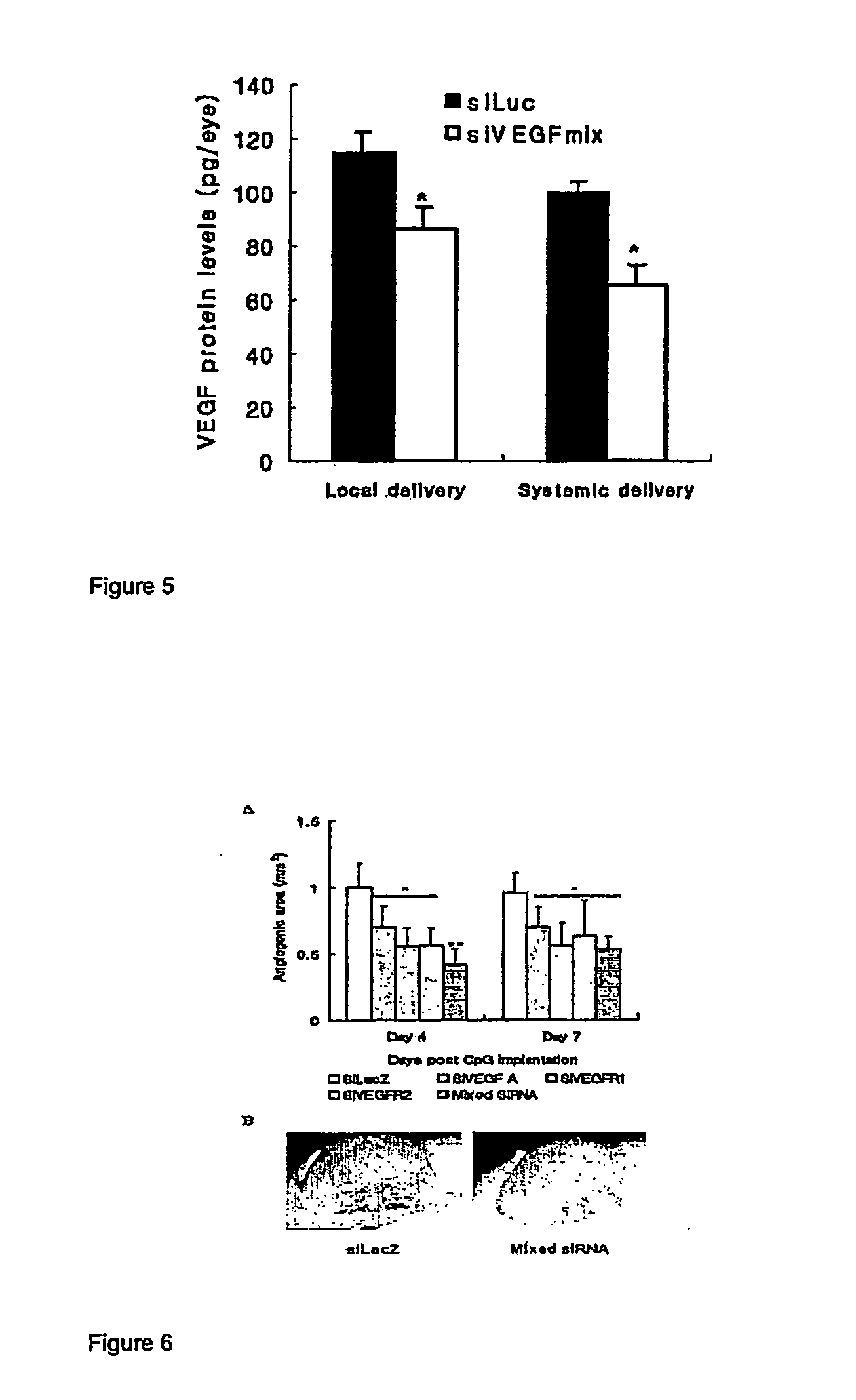RNAi Therapeutics for Treatment of Eye Neovascularization Diseases
a technology for neovascularization and therapeutics, applied in the field of rnai therapeutics for treating eye neovascularization diseases, can solve the problems of few treatment options for patients with any of these ocular nv diseases, loss of vision, and ineffectiveness in many patients, and achieve the effect of inhibiting the expression of pro-angiogenic factors and inhibiting ocular nv diseases
- Summary
- Abstract
- Description
- Claims
- Application Information
AI Technical Summary
Benefits of technology
Problems solved by technology
Method used
Image
Examples
example 1
Local and Systemic Administration of VEGF Pathway Inhibitors to Treat Anterior Ocular NV Disease
[0078]Mouse SK Model, Virus, and Tissue Culture.
[0079]The ocular stromal keratitis (SK) BALB / c mouse models were previously reported where cornea NV was induced either by CpG DNA oligo (CpG ODN), that contained the equivalent NV-inducing motif in HSV DNA genome, implanted into stroma through micropocketing procedure, or by HSV-1 viral infection through corneal scarification. The sequences of stimulatory ODNs used in this study were: 1466, TCAACGTTGA, and 1555, GCTAGA CGTTAGCGT (provided by Dr. Dennis M. Klinman, Biologics Evaluation and Research, FDA, U.S.A.). The pellet to be used for implantation into the corneal micropocket contained an equal molar mixture of ODNs 1466 and 1555, along with hydron polymer as reported previously. HSV-1 strain RE (by Dr. Robert Lausch, Uni. Alabama, Mobile) was used in the induction of HSK at the dosage of 1×105 plaque-forming units per eye in a 2-μl valu...
example 2
Local Administration of VEGF Pathway Inhibitors to Treat Posterior Ocular NV Disease
[0124]Materials and Methods
[0125]Mouse pups with a foster mother were subjected to hypoxia (75%) from P7 to P12, and switched to normal air (normoxia) from P12 to P16. (P number refers to day). Subconjunctival administration was used to deliver siRNA complexed with a cationic polymer reagent, PolyTran PT73. The ratio of siRNA to PT73 was 1:8, by weight. A 5 mM HEPES solution was used to dilute the mixture to the required volume. The siRNA dosage was 4 μg siRNA in the PT73 complex dispersed in a volume of 5 μl, per eye. One injection was performed on P12 and P13 each. For each mouse, the left eye was treated with a negative control siRNA, siLuc, and the right eye was treated with the active siRNA, siMix. The negative control siluc was an equal mixture of two oligos (siLuc-a & b), and the siMix was an equal mixture of simVEGFA, simVEGFR1, and simVEGFR2, each a mixture of two oligos (e.g., simVEGF-a & b...
example 3
Distal, Systemic Administration of VEGF Pathway Inhibitors to Treat Neovascularization using Tumor Model System
[0128]Materials and Methods
[0129]Nucleic Acids
[0130]Short double stranded RNA oligonucleotides for siRNA labeled siLuc, siLacZ, siGFP, and siVEGFR2 were designed based on studies by Elbashir et al. (2), validated to lack significant interfering homology by BLAST-analysis, and synthesized and purified by Dharmacon (Lafayette, Colo.). Two sequences were synthesized per target and combined in a 1:1 molar ratio. Target sequences used were for siLuc: aaccgctggagagcaactgca and aagctatgaaacgatatgggc, for siLacZ: aacagttgcgcagcctgaatg and aacttaatcgccttgcagcac, for siGFP: aagctgaccctgaagttcatc and aagcagcacgacttcttcaag and for siVEGFR2: aatgcggcggtggtgacagta and aagctcagcacacagaaagac (inhibition of VEGF R2 by this siRNA has been described (28)). siRNA targeted against luciferase was labeled with fluorescein (FITC-siRNA) at the 3′ position of the sense strand with standard linkage c...
PUM
| Property | Measurement | Unit |
|---|---|---|
| volume | aaaaa | aaaaa |
| particle size distribution | aaaaa | aaaaa |
| volume | aaaaa | aaaaa |
Abstract
Description
Claims
Application Information
 Login to View More
Login to View More - R&D
- Intellectual Property
- Life Sciences
- Materials
- Tech Scout
- Unparalleled Data Quality
- Higher Quality Content
- 60% Fewer Hallucinations
Browse by: Latest US Patents, China's latest patents, Technical Efficacy Thesaurus, Application Domain, Technology Topic, Popular Technical Reports.
© 2025 PatSnap. All rights reserved.Legal|Privacy policy|Modern Slavery Act Transparency Statement|Sitemap|About US| Contact US: help@patsnap.com



